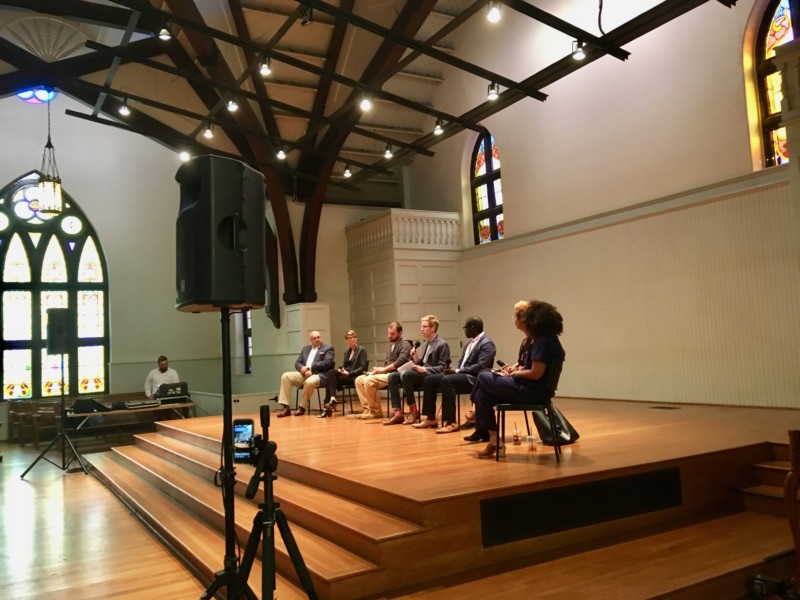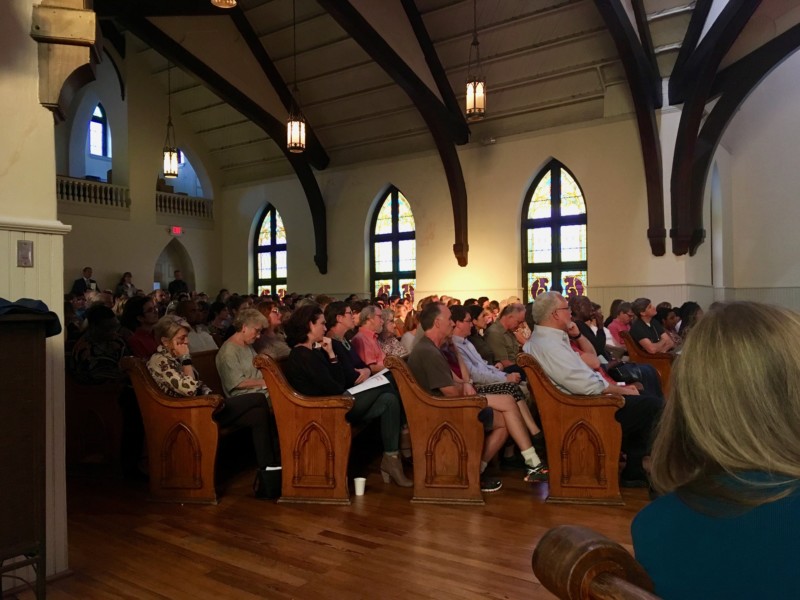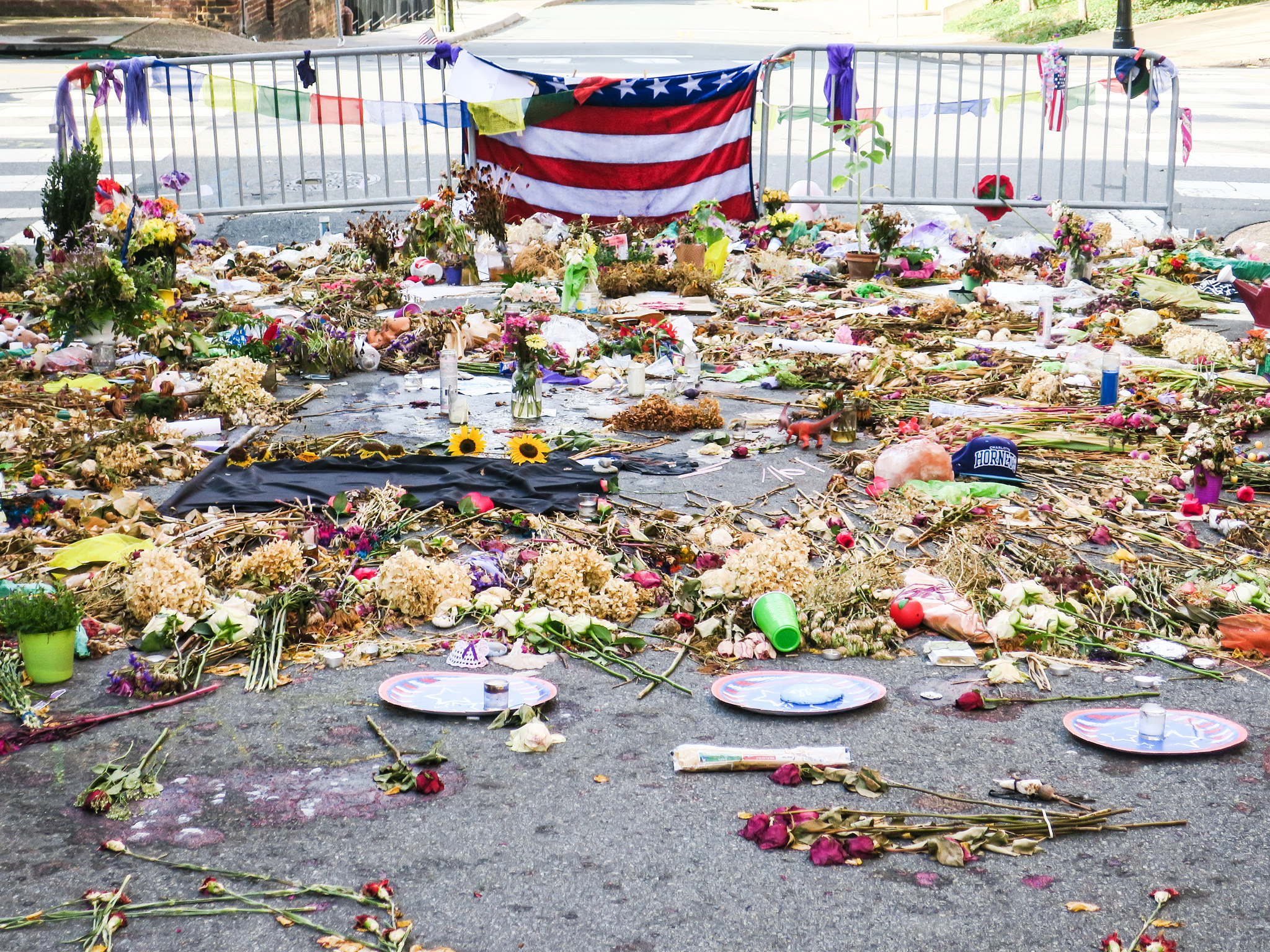Sign up for The Media Today, CJR’s daily newsletter.
JENNA WORTHAM RECENTLY RETURNED to Charlottesville, Virginia, for the first time in more than a decade. Now a staff writer at The New York Times Magazine, Wortham lived in Charlottesville for years until her graduation from the University of Virginia in 2004.
“The campus is absolutely beautiful,” Wortham told her colleague Wesley Morris on an episode of their “Still Processing” podcast. “And it does feed into this idea that if you come there and you fit in and you do the things that make you part of the culture…then somehow that makes you more American. But it’s really subversive, and it’s really dangerous.”
Weeks before her return, hundreds of white supremacists had gathered at the historical center of the UVA campus—an “academical village” built with slave labor, structured around a lawn where Wortham spent her final night as a UVA student. Their torch-lit campus march marked the start of a violent 24-hour period that included a planned racist rally and culminated in violent attacks on residents and protesters in Charlottesville.
back in Charlottesville for the first time since I graduated. ITS SO EERIE.
— J(enna) Wortham (@jennydeluxe) September 18, 2017
Wortham, who comes from a mixed-race family and grew up in Virginia, recalled her first response to photographs of the white supremacist rally in Charlottesville. “I just had this gut-crushing feeling of, ‘Of course,’” said Wortham. News coverage of Charlottesville during and after August 12, Wortham felt, carried a sense of “not here, anywhere but here.”
“Actually,” Wortham said, “it’s everywhere, including here.”
On September 18, CJR convened a panel of journalists in Charlottesville for “Race, Racism, and the News,” a conversation with local residents and reporters that looked at journalism’s abilities to portray and counteract racism in America. More than 200 people joined CJR at The Haven—a day shelter and sanctuary space located between Charlottesville’s shrouded Robert E. Lee statue and the site where local resident Heather Heyer was killed by a white supremacist who intentionally drove his car into a crowd.
The panel included Wortham; Slate chief political correspondent Jamelle Bouie; “UnMonumental” producer and creator Kelley Libby; Nation Institute fellow Collier Meyerson; UVA Center for Media and Citizenship director Siva Vaidhyanathan; and local freelance reporter Jordy Yager, recipient of AAN’s 2017 race reporting award. Kyle Pope, CJR’s editor and publisher, served as the evening’s host, and I moderated the discussion. (I run CJR’s United States Project, a local-news reporting effort.)

Panelists at CJR’s “Race, Racism, and the News” event, from left: Siva Vaidhyanathan, Kelley Libby, Jordy Yager, Brendan Fitzgerald, Jamelle Bouie, Jenna Wortham, Collier Meyerson. Photo by Sierra Bellows.
Bouie—another UVA graduate and a Charlottesville resident—spoke to the same general sense of disbelief that Wortham raised.
“I find whenever I talk about Charlottesville with people who’ve never been here…they say, ‘Oh, it’s a really beautiful place,’” said Bouie. “And I think there’s a real sense in which the real beauty of Charlottesville obscures these conflicts and these disruptions and these problems. It lets people sort of immerse themselves in an illusion that I would hope August 12 punctured—but I’m not entirely convinced of that.”
https://twitter.com/tressiemcphd/status/909907561607987200
During a conversation that spanned nearly two hours, panelists criticized reporting that concerned itself with diction at the expense of covering tangible, visible instances of racism. Terms like “white supremacy” are avoided, said Bouie, rather than used to depict “a material reality.”
“It’s just a challenge of beginning to recognize that these [terms] aren’t pejorative,” said Bouie. (As Richard Prince put it in his “Journal-isms” column at The Root, where he covered the panel, “It’s just stating a fact.”)
“I think that it’s seen that calling white supremacy ‘white supremacy’ is seen as a sort of ‘progressive’ thing to do—maybe even ‘radical,’” said Meyerson. “I think it’s the responsibility of journalists everywhere who have integrity to push back on that and say ‘No, that’s not true, and white supremacy is white supremacy is white supremacy.’”
Vaidhyanathan said the news media’s fixation on “that question of manners and diction…speaks terribly about where we are.”
“Instead of using what happened in this town on August 12 to deepen and broaden our conversation about how we treat each other, we have regressed into this question of how we talk about each other,” he said.

Local residents and reporters gathered at the Haven, a sanctuary space and day shelter, and offered questions during the two-hour conversation with panelists. Photo by Sierra Bellows.
“The problem of racism isn’t really about hate,” said Bouie. “It’s about resources, it’s about power, it’s about access, it’s about opportunity. …I could care less, frankly, if someone is nice to me, but I do care if antipathy allows them to crush the opportunities [for] people who look like me.”
Yager left a job in Washington, DC, years ago in order to report on “issues of poverty and the disenfranchised,” several of which disproportionately impact people of color in Charlottesville. He encouraged reporters to place those questions about resources, power, and access at the heart of the stories they pursue.
“When a beer hall goes up, is that racist?” asked Yager. “It’s pushing out black people from black neighborhoods, and it’s owned by white people. I don’t think the white people think of themselves as racists. But it’s a conversation that needs to be had.” Racism is “incredibly personal,” said Yager, who is white. “We as journalists, myself especially, need to focus on what form that takes.”
.@jordyyager just made me psyched that I'm a reporter and now I'm amped to to do a better job at it.
— Mallory Noe-Payne (@MalloryNoePayne) September 18, 2017
Panelists responded to numerous questions from attendees, including one from John Edwin Mason, vice chair of Charlottesville’s Blue Ribbon Commission on Race, Memorials and Public Spaces, which recommended that the city either “relocate” or “transform-in-place” its Confederate monuments. “During our hearings, I started using the phrase ‘white supremacy’ to talk about the long history of Charlottesville, and the long history of Virginia. Talking about the way that white supremacy, from slavery to Jim Crow to now, has shaped this city.” However, he noted, Charlottesville’s daily paper “could not bring themselves to repeat the phrase except in scare quotes.”
“How do you go from [an] understanding that white supremacy has many aspects…to bringing people to be able to hear it, to accept it, to then perhaps act upon it?” Mason asked. “How do you bring people from that pushback to some level of acceptance—as writers, as journalists?”
In his response, Yager credited Libby’s “UnMonumental” project as an instance where journalism moved “beyond [its] traditional means, going into communities, actually touching on real stories that bring [those communities] to light. That’s probably why we’re here, at this place in time, at this moment in history, because those stories have not been told.” Yager added, “I think that white people especially should be starting to empower and facilitate the telling of those stories.”
Journalism makes up a significant part of America’s historical record. If the problem of racism is about power and opportunity, then journalism’s practitioners—still too white, still too male—need to interrogate their own privileged positions, and reckon with how their privilege shapes how they document history. Coverage of Charlottesville frequently “treated the neo-Nazis and white supremacists and the Klansmen as something fundamentally foreign, alien or distinct from the overall narrative—not just Charlottesville, but the country, and what it is right now,” said Bouie.
“I think we forget that, in the founding of this country, those who got to write the history books did it with very specific and deliberate intents,” said Wortham early in the evening after she recounted her time at UVA. “I think that we forget that when we try to erase the parts that make us uncomfortable, we do a disservice. And it makes the stuff that’s uncomfortable feel less approachable when it just needs to be part of the entire picture.” To strive for less than a complete picture would be to render history as though it were seen by torchlight, and to consign the rest to darkness.
Has America ever needed a media defender more than now? Help us by joining CJR today.



